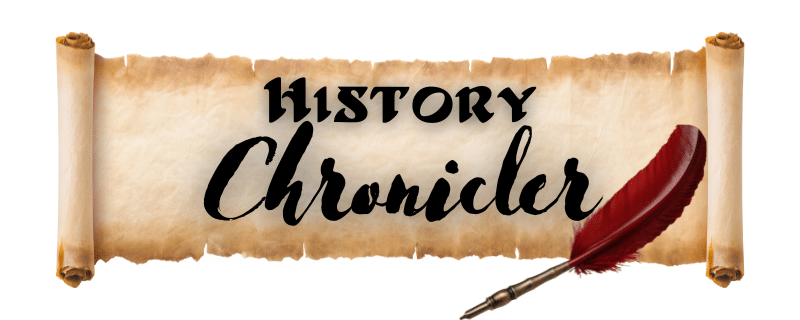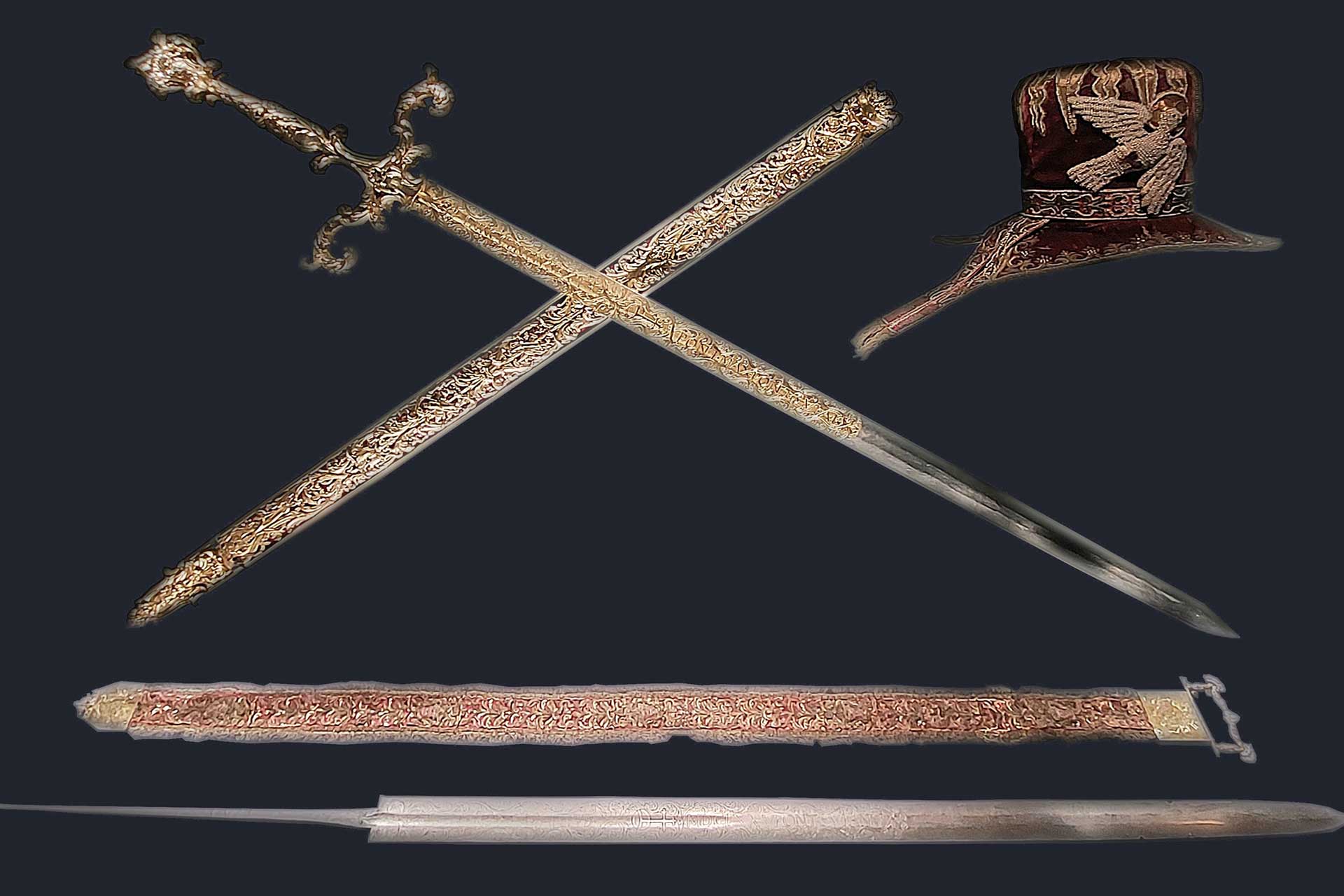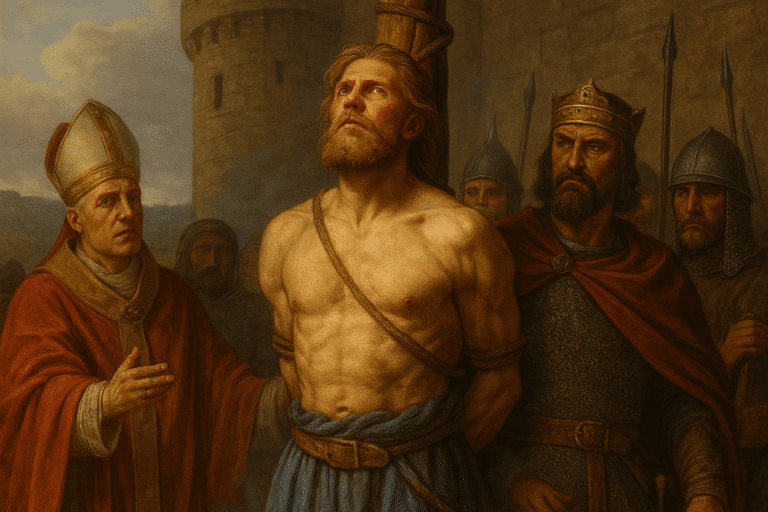15 Famous Swords of Historical Figures and Their Stories
The arms and weapons used by great leaders, warriors, and conquerors throughout history have often been just as legendary as the owners themselves. While great heroes and generals often achieved fame or infamy, their status, history, and courage were symbolized by the weapons that they used. Swords, firearms, and armor often became entwined with their reputations and owners as time went on and in many cases were passed on as historical artifacts. Chroniclers, poets, and storytellers have long attributed almost mystical significance to such weapons, and they became part of recorded history.
In this list, we will look at twenty of the most famous weapons and their users. These could be war instruments, daggers, guns, or swords but in all cases, they were carried by someone that made them iconic, for better or worse. We will also look at the stories, background, and history that made the weapons well known.
15 Famous Swords of Historical Figures and Their Stories

1. Honjo Masamune
he Honjo Masamune is one of the most famous swords in the history of Japan. It was made by the swordsmith Masamune in the late Kamakura period and was the property of General Honjo Shigenaga, who got the sword in the age of civil wars, known as the Sengoku period. The sword was considered to be exceptionally sharp and made of the highest quality, showing the art of the Japanese smiths.
Years later, the Honjo Masamune became the property of the Tokugawa shogunate. It was handed down from one Shogun to another and was considered a political symbol of their power and right to rule, rather than a mere weapon.
The sword is said to have been lost after the Second World War when it was handed over to the Americans and has not been found since, despite numerous searches.

2. Zulfiqar
Zulfiqar was the legendary sword of Ali ibn Abi Talib, a significant figure in Islamic history. According to Islamic tradition, the Prophet Muhammad bestowed the sword upon Ali during the Battle of Uhud in 625 CE, following Ali’s exemplary display of courage and strength. Zulfiqar is often described as having a forked or double-edged tip.
In Islamic history and tradition, Zulfiqar is often used by Ali in various battles, such as the Battle of the Trench and the Battle of Khaybar. His successful use of the sword in these battles and his overall leadership made Ali a central figure in the early years of Islam, both in a military and spiritual sense. The use of Zulfiqar by Ali is a significant aspect of his legendary status in Islamic culture, often associated with the idea of martial prowess and just leadership.
3. The Wallace Sword

The Wallace Sword is a longsword that is believed to have been used by the Scottish hero, William Wallace. It is named after him and is one of the most famous weapons in Scottish history. The sword is over four feet long, and it would have taken a very strong man to wield it in battle.
Wallace was a leader in the First War of Independence against the English occupation of Scotland. He is most famous for his victory at the Battle of Stirling Bridge in 1297. The Wallace Sword was not necessarily the sword that Wallace used in this battle, but it has come to be associated with him and his legacy.
The sword is now on display at the National Wallace Monument in Stirling. It is a symbol of Scottish independence and the fight against English rule.

4. Curtana – The Sword of Mercy
Curtana, known as the Sword of Mercy, is one of the ceremonial weapons used in the coronation of British monarchs. Unlike other swords, its tip is blunt, symbolizing mercy tempered with justice. This unique feature sets it apart, representing the idea that sovereigns must balance authority with compassion.
The sword’s origins trace back to the 11th century, with early legends associating it with Edward the Confessor. Over time, Curtana became an enduring feature of British coronation ceremonies, passed down as part of the Crown Jewels. Though it never saw battle, its ceremonial role has been no less powerful, shaping perceptions of monarchy for centuries.
In modern times, Curtana continues to feature prominently during coronations, linking contemporary rulers with their medieval predecessors. For the public, it serves as a reminder of the symbolic responsibilities of kings and queens, emphasizing that true power requires the restraint of mercy.

5. The Sword of Goujian
Unearthed in 1965 in a Hubei tomb, the Sword of Goujian astonished archaeologists for its immaculate preservation despite being over 2,000 years old. The blade, dating back to the Spring and Autumn Period, bore inscriptions tying it to King Goujian of Yue. Its resilience against time reflected not just technical brilliance but also the enduring power of Goujian’s legacy.
Goujian’s story is one of patience and revenge. After suffering defeat and humiliation at the hands of the state of Wu, Goujian endured years of hardship before rebuilding his strength. Eventually, he exacted his revenge and toppled his rivals, making his sword a powerful metaphor for perseverance and triumph.
Today, the Sword of Goujian is displayed in the Hubei Provincial Museum. Its intricate craftsmanship and symbolic history make it one of China’s most iconic artifacts, embodying both the artistry and resilience of an ancient civilization.

6. Joyeuse – The Sword of Charlemagne
Joyeuse was Charlemagne’s sword. The sword is said to have changed colours as it flashed in the sun. It came to be associated with the power of the Carolingian emperor. Medieval stories gave it relics, including the Lance of Longinus, to make it holy.
Charlemagne used the sword Joyeuse in his conquests and to solidify the Frankish empire. His triumphs, supported by the legendary power of the sword, strengthened his authority. The sword was at his side in both battle and state, central to his imperial persona.
The Louvre Museum in Paris has a sword that is said to be Joyeuse. This sword was used for centuries in French coronations, connecting kings to Charlemagne’s legacy. Though its authenticity as Charlemagne’s sword is debated, its symbolic power endures.

7. Napoleon’s Sabre
The curved sabre of Napoleon Bonaparte was as graceful as it was lethal. It was meticulously made, reflecting his dual role as a general and a politician. Napoleon’s sword was wielded in battlefields, not just in ceremonial parades, which projected him as a warrior-king.
Historical records show Napoleon wielding his sabre during his Italian and Egyptian campaigns. The sabre was engineered for quick, forceful slashes, much like the rapid, bold strokes of his military campaigns. For his soldiers, the sabre represented his courage and leadership.
In recent times, one of Napoleon’s sabres fetched a multi-million dollar price at an auction. Beyond its monetary worth, it is a relic of the ambition and brilliance of a man who continues to fascinate and divide historians.

8. Tizona – The Sword of El Cid
Tizona is one of the two swords of Rodrigo Díaz de Vivar (the Cid) and is one of the most famous swords of Spain. According to legend it was a source of dread among those that encountered it and was the weapon of the Cid’s peerless skill and charisma.
Rodrigo the Cid bore the Tizona in his conquests in Spain. As part of the Reconquista the Christian forces had reconquered parts of the Iberian Peninsula from the Moors. Rodrigo’s campaigns were successful, fighting against superior numbers and he became regarded as almost a national myth. The sword was used for fighting, but also for inspiring others, a sign of the Lord’s blessing upon him.
The Tizona now rests in Burgos, Spain. It is as much a national symbol of Spanish identity as an artifact. It is a way to bind history and myth to the Medieval period. To Spaniards it is not merely a weapon of a national hero but of the forging of their national and political identity.

9. The Sword of Osman
The Sword of Osman was an important ceremonial artifact in the Ottoman Empire for centuries. Each new sultan would be girded with the sword upon his accession to power. The sword was unique among the weaponry of the empire in its symbolic power. Rather than for its use in battle, it was a symbol of dynastic legitimacy.
The Sword of Osman was the sword of the eponymous first sultan and founder of the Ottoman dynasty, Osman I. As the empire grew to encompass three continents, the sword would come to symbolize the unity and dominance of the Ottomans over these diverse peoples.
The Sword of Osman can be seen today in Topkapi Palace in Istanbul. The Ottoman Empire is no more, and the sword is no longer used to crown a new sultan. It is a symbol of the past, and the role that tradition plays in maintaining power.
10. Shamshir-e-Zomorrodnegar
In Persian mythology, Shamshir-e-Zomorrodnegar was a magical sword. Legends claimed the sword was inlaid with emeralds and had the power to annihilate demons and heal wounds. It was not attributed to any specific monarch, but it holds a significant place in Persian mythology.
The sword is linked to the mythical hero Rostam and features in Ferdowsi’s Shahnameh, the Persian national epic. In these stories, Shamshir-e-Zomorrodnegar is depicted as a divine weapon used in the fight against evil forces, with echoes of Zoroastrian concepts of the eternal battle between good and evil.
The sword was mythical, and while it did not have a direct influence, it played a role in Persian identity and culture. Its legends contributed to Persian literature and iconography, exemplifying the cultural significance a weapon can hold.

11. The Sword of Saint Peter
Tradition says the Sword of Saint Peter was the blade the apostle used to cut off the ear of a servant of the high priest in the Garden of Gethsemane. Although the biblical narrative has Jesus chastising Peter for this, the event gave the sword a special place in Christian tradition.
In the centuries that followed, relics purporting to be Peter’s sword were held in reliquaries and displayed in churches, especially in Poland. In fact, a sword venerated as the Sword of Saint Peter is kept at the Archdiocesan Museum of Poznań in Poland. It became more a symbol of the power of faith and defense of the church than an instrument of violence.
In any case, whether the relic is authentic or not, the Sword of Saint Peter demonstrates how Christianity incorporated military imagery into its religious tradition. The relic is an expression of humanity’s righteous passion and God’s merciful forgiveness.

12. The Sword of King Arthur – Excalibur
Excalibur, the legendary sword of King Arthur, is one of the most iconic weapons in Western mythology. According to some versions of the Arthurian legend, Arthur pulled the sword from a stone, demonstrating his divine right to be king. In other stories, Excalibur was given to Arthur by the Lady of the Lake, endowing the weapon with magical power.
Arthur’s many triumphs with Excalibur, from uniting Britain under his rule to defending it against Saxon invaders, helped to establish the sword’s reputation. In addition to its use in battle, Excalibur became a symbol of kingship, destiny, and the special relationship between a ruler and his people. The mystical properties of the sword’s scabbard, which was said to protect its wearer from bleeding, added to its legend.
Excalibur has been immortalized in countless works of literature, film, and popular culture, and its influence can still be seen today. While the sword’s existence as a physical object is unlikely, its impact as a cultural symbol is undeniable, representing ideals of justice, leadership, and the power of myth.
13. The Sword of Edward the Black Prince
The Black Prince Edward was one of the greatest English leaders of the Hundred Years’ War in France. This sword still resides in Canterbury Cathedral, where it still draws the eye of visitors today.
This is the sword of the great warrior, who fought for England and subjugated France. It was made for a high-ranking knight, to the measure and taste of a ruler. He won with this weapon in the most important battles of his life.
Edward probably had it by his side in battles like Crécy in 1346 and Poitiers in 1356. This is when he won the title of the most powerful knight. All of England’s military glory in the 14th century was associated with him and his sword.
It also became a memorial to his military feats and one of the symbols of the country’s medieval history. The sword still lies today in his tomb in Canterbury Cathedral. It symbolizes the tragic fate of a prince who died before his time. It became a reminder to everyone of the fragility of power and the immortality of heroic feats.

14. The Sword of Tipu Sultan – The Tiger of Mysore
Tipu Sultan, the ruler of Mysore, was known for his fight against British colonialism. His sword was decorated with tiger motifs, a symbol of his nickname, the “Tiger of Mysore”. It was both a weapon of war and a symbol of defiance.
Tipu used the sword in his battles against the British East India Company. Despite his use of technology and fierce resistance, he was killed in battle in 1799, and his sword was taken by the British. To the colonizers, it was a trophy of victory.
Tipu’s sword is now in private collections and museums. It is a subject of ownership debates. It still symbolizes both anti-colonial resistance and the legacy of a ruler who fought against the empire.

15. The Sword of Saladin
Saladin was the Muslim leader who fought against the Crusaders. Saladin was a warrior and swordsman and is often portrayed with a curved scimitar like that seen in Islamic culture. Saladin was a significant figure in history for his battles against the Crusaders, with famous battles including Hattin in 1187 in which he recaptured Jerusalem. His sword was a key part of these military successes, helping his image as a great warrior, which in turn made his sword legendary.
Saladin’s blade was made of the famous Damascus steel, which was legendary for its sharpness and how deep the sword could cut. The sharpness of the blade was exaggerated in stories. It was claimed that the sword could be run through a silk handkerchief without cutting it (which was clearly a story to demonstrate how good Damascus steel was).
Saladin’s sword was also symbolic of chivalry and honour. He was seen as a generous and honourable leader by many of the Crusaders who met him. Swords of rulers and leaders often symbolize military success, but Saladin’s sword also came to be symbolic of chivalry and honour because he was such a generous and honourable leader.
Saladin is now considered a symbol of unity and justice in the Islamic world. This represents his image as a great warrior, but also as a fair and generous ruler.
Weapons such as these are powerful emblems of power, identity, and legacy. Each sword, spear, or saber held the weight of empires, the fate of battles, and the personal narrative of the figure who wielded it. From the mythical Zulfiqar to the meticulously preserved Sword of Goujian, they reflect the artistry of their makers and the ambitions of their owners. They serve as reminders that history is not just written in words but is also etched into the iron and bronze that shaped civilizations.
Today, these artifacts continue to inspire awe, curiosity, and storytelling. Blurring the line between legend and fact, they have become cultural icons that outlive their practical use. Displayed in museums, celebrated in literature, or revered in folklore, their resonance endures. The stories of these weapons ensure their wielders—and the ages they defined—will never be forgotten.










